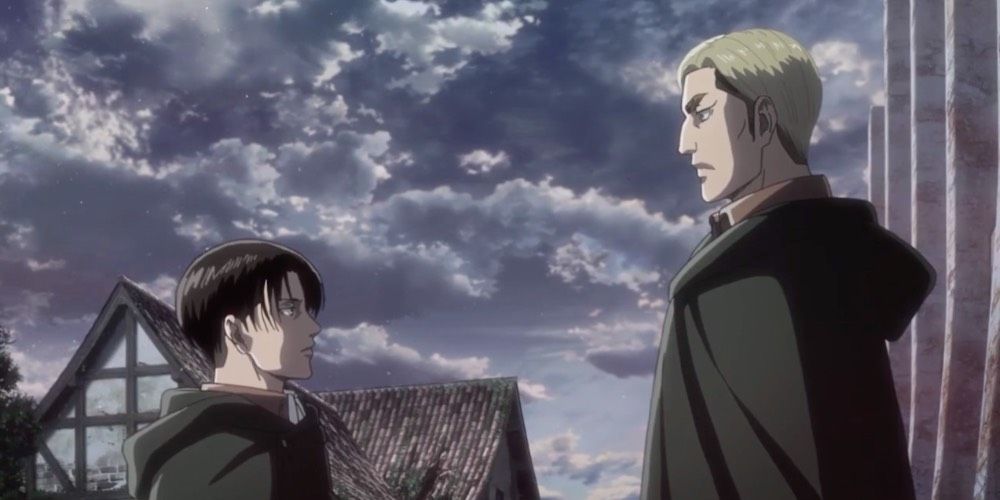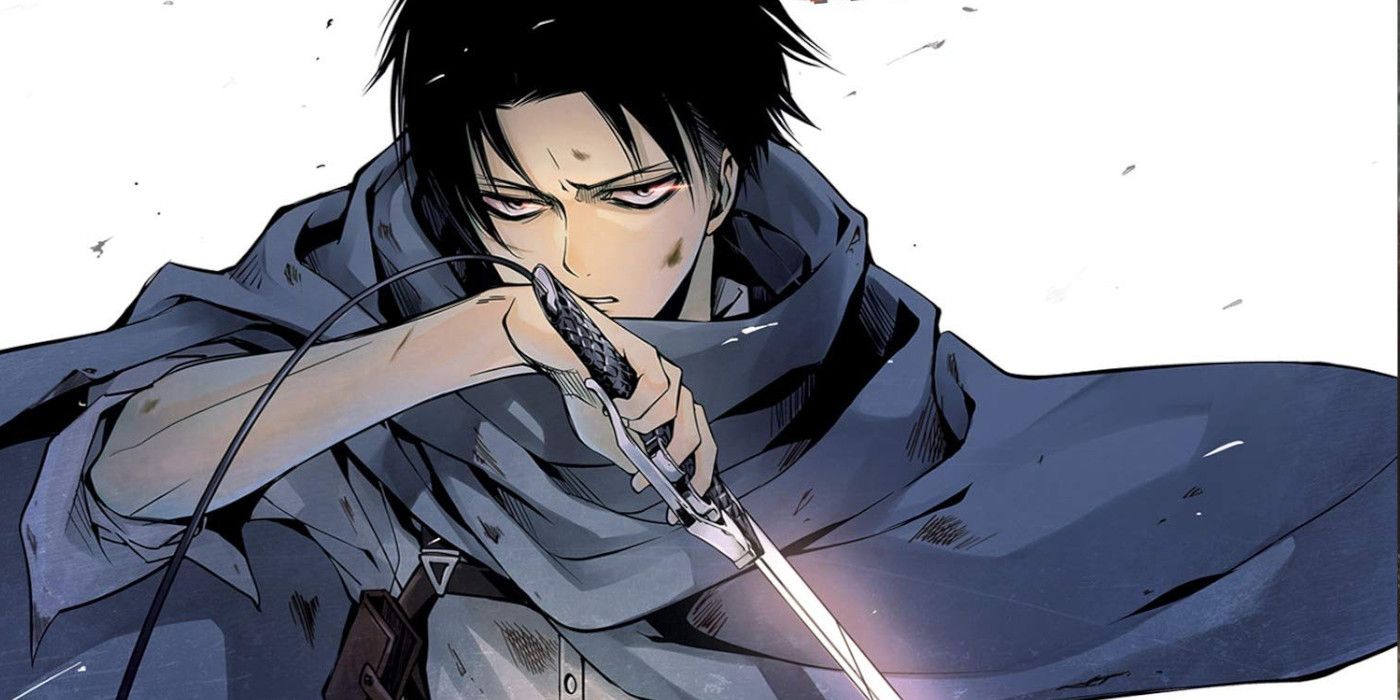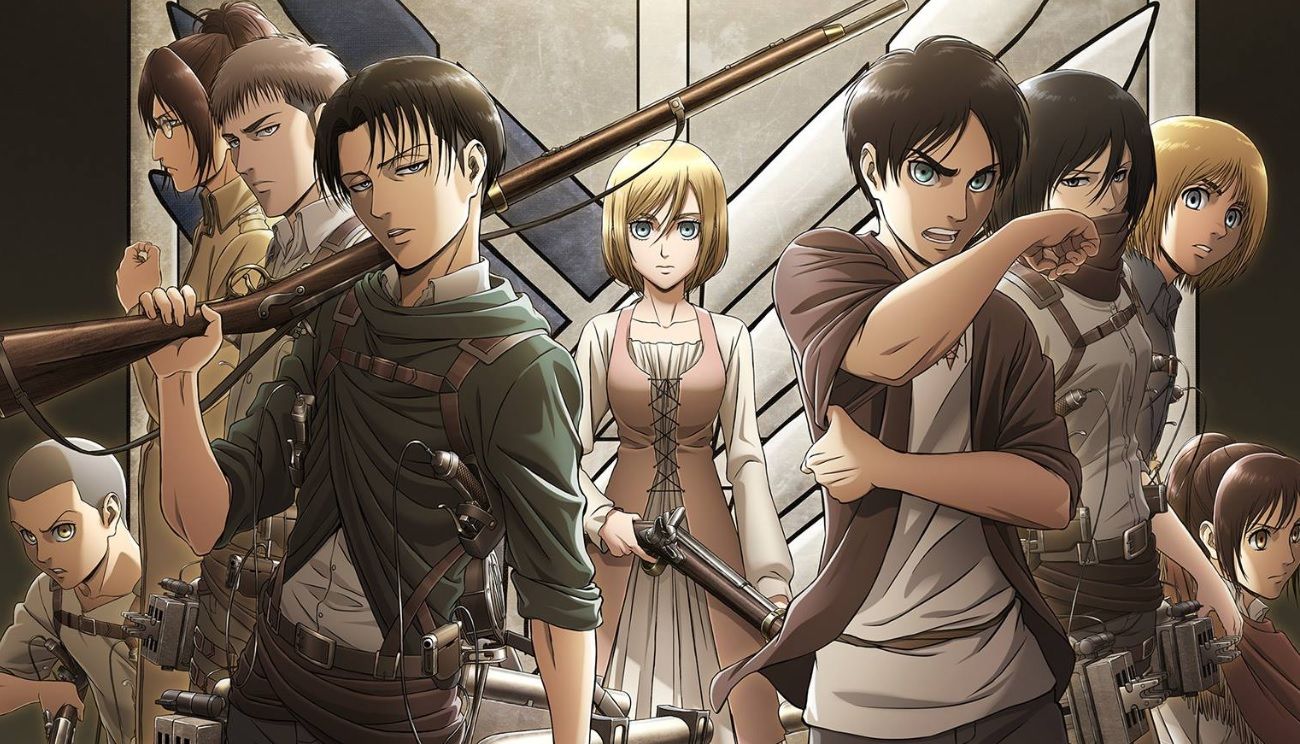While anime is already a very niche community, the industry is broken down into different sub-groups known as anime demographics. The most popular anime series mark the traits of each demographic from Shojo, Josei, Shonen, and Seinen. As one of the most popular Shonen series, the acclaimed anime Attack On Titan is arguably a pinnacle example of what the Shonen demographic is capable of. AOT has also dabbled in the opposing Shojo demographic to find shocking and significant success.
When Attack On Titan began to profit from its Blu-ray sales, a light novel titled Attack On Titan: A Choice with No Regrets made it to fans' collections. AOT creator Hajime Isayama supervised the creation of the light novel and the story was eventually adapted in 2013 into a manga. This manga version was published in the Shojo magazine ARIA. From the immense success of the manga, which put ARIA magazine in the industry spotlight, two OVAs – which stands for original video animation – were broadcast in 2014 and 2015. The spin-off story about two critical AOT characters reveals the true nature of demographics and what the future of Shojo could look like.
Attack On Titan: A Choice With No Regrets Takes A Critical Look At Levi And Erwin's History

In each version of this spin-off, the protagonist is Levi Ackerman, who most AOT fans will recognize as the stoic Captain of the Scouting Legion division in the main series. A Choice With No Regrets shares the backstory between Levi and Commander of the Scouting Legion Erwin Smith before Levi joins the Survey Corps. At the start of the story, Levi is a criminal in the slums of the Underground and runs his own criminal organization alongside two of his friends. At this time, Erwin is the Survey Corps Squad Leader and in possession of incriminating documents tied to anti-expedition faction leader Nicholas Lobov. The plot kicks off when Levi and his friends are given the job of assassinating Erwin to steal back those documents. In exchange, Lobov promises the trio citizenship aboveground.
Any viewer or reader who is familiar with Attack On Titan has a gist of what is going to happen. However, the critical core of the story is not in what happens to Levi and Erwin, but in their budding relationship and character dynamics. More than Levi and Erwin's individual histories, A Choice With No Regrets focuses on when their stories intersected and the significance of their partnership. Without spoiling much, their first interaction with one another isn't ruled by animosity but rather intrigue. They both find each other impressive and admirable.
This meeting between Levi and Erwin is a moment of change for them, more so Levi than Erwin, to be fair. Their relationship changes the trajectory of Levi's life especially and helps shape them into the characters they are in the main series. It's a story of friendship, freedom, crime, and salvation that relies on the dramatic dynamics between Levi and Erwin. This focus on relationship dynamics and drama explains why a majorly popular Shonen manga would be published in a Shojo magazine.
The Differences Between Shojo And Shonen
For decades, anime demographics like Shojo and Shonen became famous for certain expectations and tropes. This has led to certain series becoming popular and serving to represent these demographics. While the Shojo demographic is most popularized by series like Fruits Basket, Sailor Moon, Ouran High School Host Club, and Kimi Ni Todoke, Shonen is popularized by series like Fullmetal Alchemist, Demon Slayer, Naruto, and, most notably, Attack On Titan.
Shojo became famous for stories for romance between younger characters, love triangles, and very often a high school setting. Female leads are most often the main characters. The most prominent themes are love, friendship, courage, coming-of-age, and sometimes family or career. Among genres, Shojo is most often seen as spotlighting romance, drama, and comedy, but the sub-genre of Magical Girls has brought action to the demographic.
The Shonen demographic has become famous for its action, comedy, and occasional romance – and in recent years has taken darker tones of horror or drama. Typically, these stories are led by an unexpected protagonist with superior abilities or resilience who is most often male. Power-scaling tropes are especially popular among Shonen series, leading to bombastic battles. When it comes to Shonen themes, the most prominent are coming-of-age, competition, friendship, inner strength, courage, and family. Shonen has a wide variety of genres mixed together, even including the historical genre more often than Shojo series. The most popular Shonen anime all share the fantasy genre.
With how clear the divide is between Shojo and Shonen series, it's confusing when certain stories that fit one demographic are labeled under another. The real reason why any anime is given a demographic has more to do with the business of manga. When publishing manga, each series is released in specifically categorized magazines. These magazines are labeled under the demographics Shojo, Shonen, Seinen, and Josei. Each represents the age and gender of the magazine's audience. Focusing on Shojo and Shonen, the former markets to girls roughly between the ages of 8-18, and the latter markets to boys roughly between those ages as well. Similar to the toy market – which also marks advertising based on gender and age – manga are created with audience sales in mind.
This idea of breaking down groups of people into marketable groups is a critical practice in sales. According to the University of Houston, this strategy is known as "customer segmentation" which "is the process of dividing a target market into smaller groups, based on shared characteristics including demography, psychography, geography, [and] behavior." The goal of using this strategy in sales is to "customize your product/service, distribution channel, pricing, and marketing message and channel, to grab the attention and meet the specific needs of a narrowly defined customer group." At the end of the day, it's all about the data and numbers. In the case of entertainment, the most popularly sold series are the ones that marketers will be paying attention to.
These marketing norms do not mean that it's impossible to break the mold of manga storytelling. There are plenty of series that break from this tradition and have found success. The psychological drama Banana Fish is a majorly popular and highly praised Shojo series. For Shonen, Your Lie In April is an unexpected romantic drama that has a huge audience. What these two atypical series have done is find a way to fit into their respective markets just enough to sell their unique stories, and thankfully, the gamble paid off. This is the same case for Attack On Titan's spin-off – though because of AOT's major success as a Shonen series, the dive into Shojo publishing is even more remarkable.
Attack On Titan Takes A Big Leap Into The Shojo Market

The original light novel spin-off was published to be bundled with the first press release of the 6th Blu-ray volume of the anime's 1st season. At this point, the story of Levi and Erwin's history was essentially sold to die-hard AOT collectors. When the manga was produced, the decision to publish it in ARIA magazine proved to be the perfect choice. The Shojo magazine is known for its atypical titles like No. 6 and K, but also has several traditional Shojo manga series alongside them. Attack On Titan: A Choice With No Regrets would fit in with the non-traditional Shojo magazine thanks to the story's most crucial details.
Two of the major selling points for Shojo series are a focus on relationships and attractive men. Shonen has an equivalent selling point of featuring attractive women. This is how the spin-off A Choice with No Regrets was able to sell to an essentially Shojo demographic. The series' release proved to be a booming success in 2013 as ARIA magazine was forced to reprint copies of their November issue due to the extreme demand for the spin-off's prologue chapter. This wouldn't be the first time ARIA would be short of the demand for the AOT spin-off release as it became the magazine's most profitable series.
While this may sound like a great gamble played by marketers, this is not the first time a major Shonen series has had a Shojo spin-off. Neon Genesis Evangelion – originally published as a Shonen manga in the magazine Young Ace – also has a spin-off series with the same marketing tactic. Neon Genesis Evangelion: Campus Apocalypse was published from 2007-2009 in the Shojo magazine Asuka. It unfortunately didn't receive the same attention and recognition that AOT's spin-off did. This may be because the original creator wasn't part of the spin-off and the premise was too far from the original. There could have also been other issues, but this shows that the success of AOT's spin-off story is more than viewers' desire for something different.
Knowing that the strategy of blurring demographics failed before with Evangelion, it would be safe to assume that trying that again would come with difficulties. The success of Attack On Titan: A Choice with No Regretscan be attributed to the original creator Isayama's supervision of the light novel's production, ensuring it would be closely tied to the original series and properly represent a major part of it. The fact that AOT fans themselves were given the chance to read the novel and form a fanbase around it also helped to give increased support when it would be released in ARIA magazine.
This spotlight on the Shojo magazine also does something special for the Shojo demographic. It introduces a new audience of Shonen fans to the Shojo titles that were released alongside A Choice with No Regrets, which could have potentially given the magazine a long-time boost in sales if it had focused more on subversive titles. With the massive success of this spin-off, it continues to challenge what specific demographics are meant to look like and could shake up the rather limited scope of how Shojo series are portrayed.
With Shojo manga, there isn't as much variety as there is among Shonen series. Shonen often play around with genre mixing and various themes more often than Shojo does. In recent years, however, there has been a slight rise in subversive Shojo series like Yona of the Dawn and My Next Life as a Villainess: All Routes Lead to Doom! The success of Attack On Titan: A Choice With No Regrets, both the manga and the OVA, is significant in the future of the industry. It supports the idea of blurring the lines of marketing traditions and most importantly having more unique stories for the anime community.


